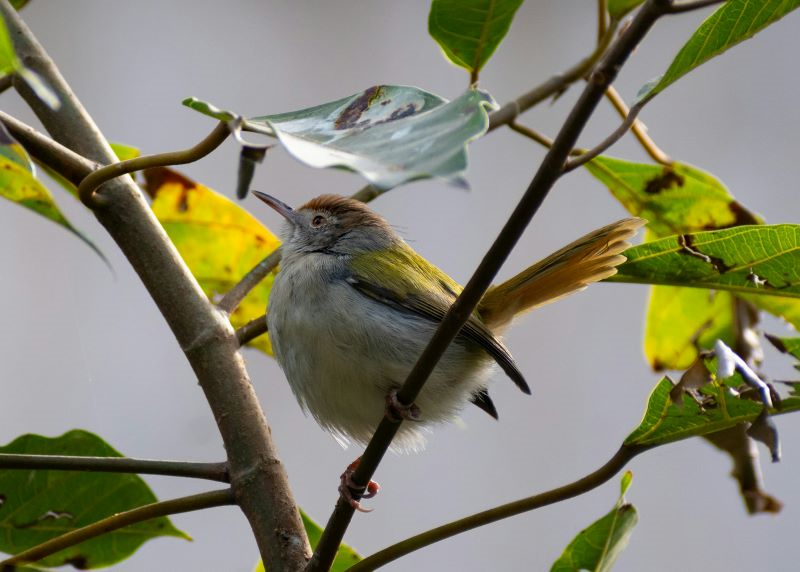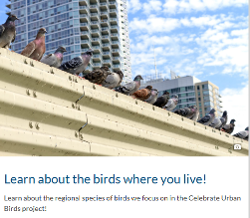Projects, Resources to Engage Kids in the Wonders of Bird Migration
Birding is a great way for students and teachers to connect with nature. From citizen science projects and live feeder stations—and books galore—the resources here will help kids learn about our avian friends.
 |
|
Photo by Maheera Kulsoom on Unsplash |
In North America, the return of longer days also cues the vibrant return of songbirds. Though not all birds disappear during the winter, the number and variety increase during the spring migration—and watching them is a great way for both students and teachers to connect with nature, whether through books, citizen science projects, online feeder stations, or outdoor bird-watching expeditions.
Studying the natural world teaches students how to use their observational skills, identify details, and share the details they gather. Since birds appear in all outdoor environments, bird-watching is also a reliable entry point into place-based learning, in which students, connecting to their environment, communities, and culture, better understand themselves and their place in the world.
A few projects to get students started on observing and understanding birds:
- ”Celebrate Urban Birds,” a citizen science project that invites people who live in cities to collect data for wildlife researchers. After learning to identify birds native to their area, participants choose a 50-by-50-foot area, which they watch for 10 minutes on three different occasions. To facilitate this activity with classrooms, free materials are available through the “SciStarter” web site.

- World Migratory Bird Day, celebrated on May 10 and Oct. 11, during the spring and fall migrations. The 2025 Conservation Theme is “Creating Bird-Friendly Cities & Communities.” Students can help by participating in the Global Big Day event on May 10. when people all over the world take a few minutes to report the birds in their own communities using the eBird app. When sightings are recorded, an interactive digital map lights up so students can see how they are contributing to a world-wide collection of bird data. By studying bird migration, students witness powerful examples of resilience in the animal world and learn about the importance of birds to the environment, the challenges facing bird populations, and how to support more bird-friendly communities.
- Bird-watching kits for families, like the one created by Alliah Krahn of Northern Lights Library System in Alberta, Canada, in partnership with Morinville Centennial Community Gardens. It included a journal, materials, and video instructions for making gelatin birdseed feeders. “I feel strongly about creating programming that celebrates the strengths of living in rural communities,” she says, noting how the community garden was able to add its expertise about local wildlife. Studying birds in an outdoor setting has a variety of health benefits and cultivates social and emotional learning (SEL) skills, including building identity, setting goals, practicing emotional regulation, feeling and expressing empathy, engaging in positive relationships, and making responsible decisions.

- Online live feeder stations, like the one at Cornell (pictured) or feeder cameras placed outside individual school buildings. Through these stations, students who cannot get outdoors can observe birds on a computer and describe the types of birds they see and their behaviors.
- Outdoor treks to observe birds. To get the most out of the experience, break into smaller groups and head in different directions. Focus first on listening for birds, so students are invested in quiet. When students spot a bird, have them calmly and quietly point without speaking. Birding notebooks can include visual checklists, as well as drawn or written observations, so students learn multiple ways to build their outdoor understanding without much verbal instruction. While a birding guide can add a lot of insight, too, educators shouldn’t feel they have to bring instruction outside the classroom to make the activity worthwhile; there are plenty of benefits to leaving notebooks and pencils behind and just enjoying birds in their natural surroundings.
See also "For Young Readers, A Birdy Booklist"
Online resources about birds, birding, and migration
Join the conservation community in educating young people about birds through interactive resources, lesson plans, and downloadable activities.
3 Billion Birds
Web page with summary of bird conservation concerns, infographics, and ways to help.
American Bird Conservancy Bird Library
Website with a searchable catalog of more than 400 comprehensive bird species profiles, including sounds, pictures, history, and conservation status.
Audubon Adventures
Web page with free curriculum downloads and inexpensive bulk purchases as well as free online resources about birds.
Audubon for Kids
Free online bird activities and downloadables for educational use.
Bird Cast
Color-coded live bird migration maps track the movement of birds in the U.S. using satellite weather station data.
Celebrate Urban Birds
Information about birds, community events, news stories, and links to citizen science projects.
Children and Nature Network
This site advocates for more time for children in nature. Filters allow searching for dozens of resources, including articles on birding with children that contain embedded links to research and learning materials.
Cornell Lab K-12 Education
Free activities about birds, as well as detailed lesson plans, book lists, and instructions for using the eBird Merlin ID app in English, with some resources in Spanish.
Lights Out
Videos, infographics, and easy-to-read text that explain how light pollution disrupts bird migration and habitats and how these problems are being solved.
Sci Starter
Citizen science projects, which can be filtered by topic, age, location, and more.

Tiffany Coulson is a curriculum designer and research librarian for Altera, an educational nonprofit.
RELATED
The job outlook in 2030: Librarians will be in demand
The job outlook in 2030: Librarians will be in demand
ALREADY A SUBSCRIBER? LOG IN
We are currently offering this content for free. Sign up now to activate your personal profile, where you can save articles for future viewing






Add Comment :-
Be the first reader to comment.
Comment Policy:
Comment should not be empty !!!